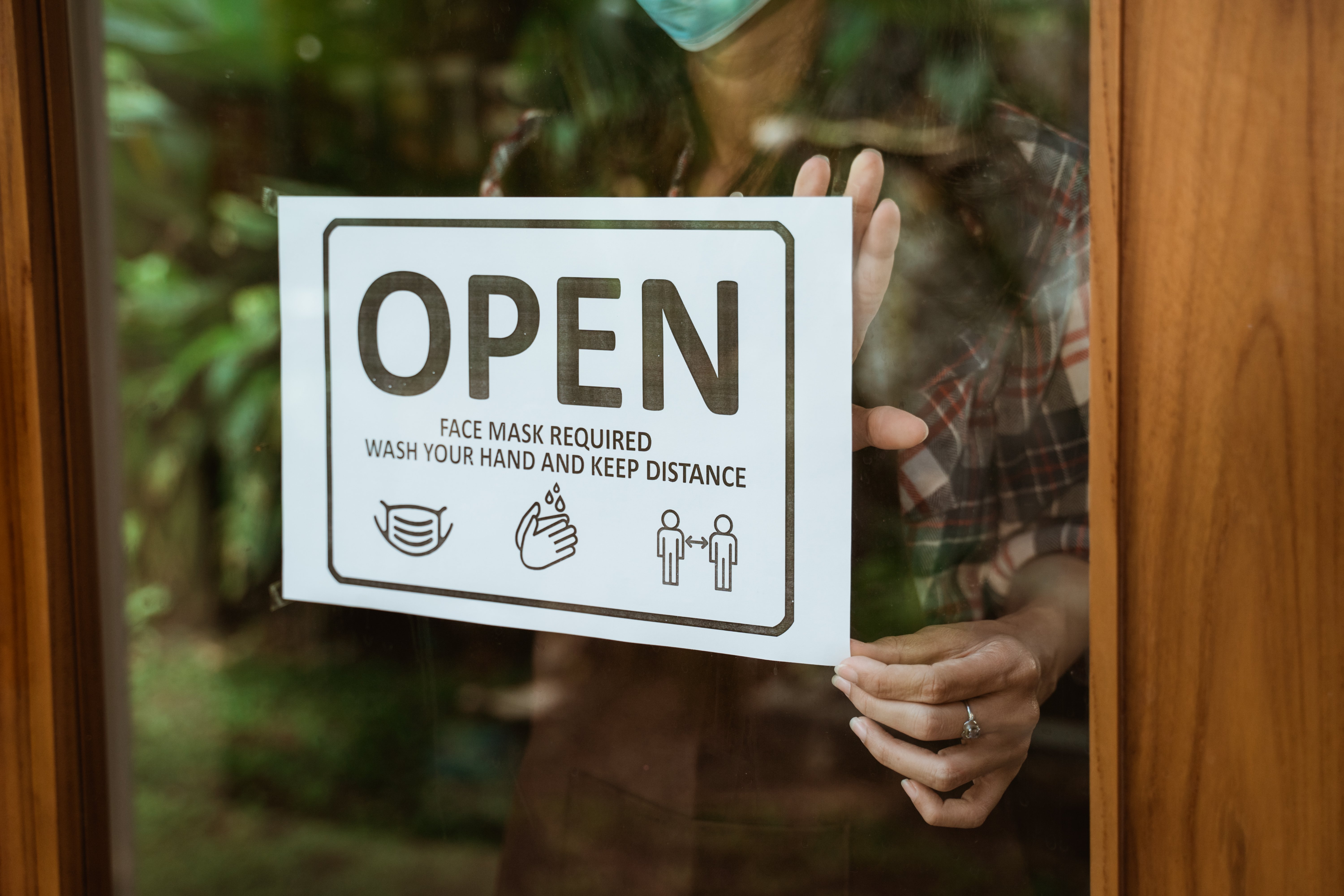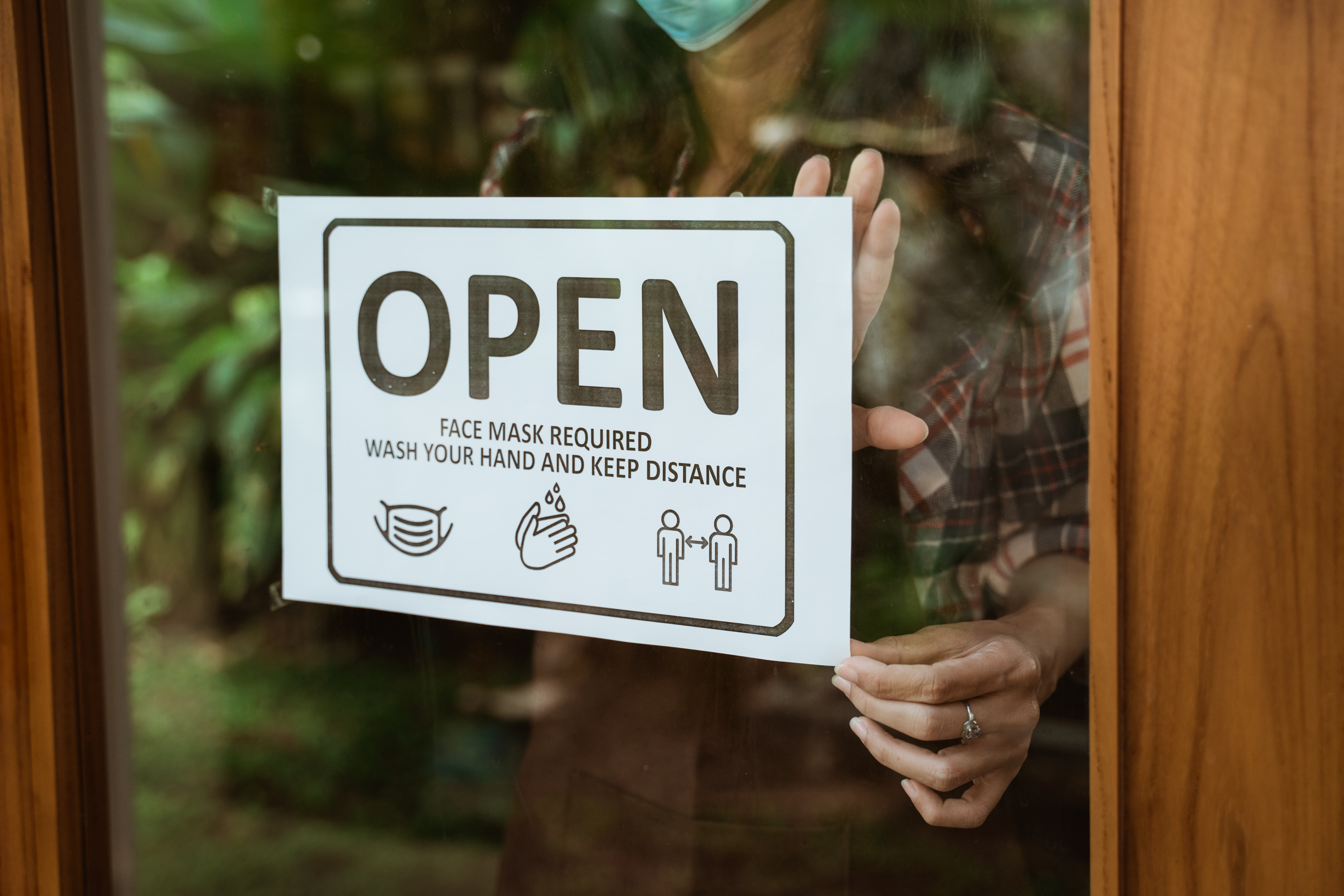Today’s blog is a long one, so we are going to knock out this introduction quickly.
Things have gotten ugly in American restaurants with angry customers turning to harassment, intimidation, aggression, and even violence as COVID leads to conflicts over mask mandates and service limitations in the middle of a pandemic.
It will be obvious where we stand on this—there is no excuse for hostility, especially toward a restaurant’s staff. But we are not here to finger wag (though some of it cannot be helped). Today, we want to understand the separate but interrelated causes of these conflicts and what restaurants are doing about it.
What happens when the customer, or in this case many customers, simply are not right? How do restaurants handle violations of their safety policy, aggression about service limitations, and just flat out bad behavior?
Today, we are putting in the food service market research to contextualize the current conflicts, explore different responses to it, and to probe the regional distinctions that shape both.

Fatigue and Frustration in American Eateries
As we see it, there are two principal causes of this surge in ghastly behavior, 1) frustration and fatigue surrounding COVID safety measures, and 2) the gap between supply and demand that COVID has created in nearly every industry.
Frustration and fatigue first.
Look, there’s no way around it: People feel victimized by mask mandates. Sure, it is counterintuitive, but the fact remains: a significant and vocal minority of Americans feel the measures instituted to protect them and their neighbors are infringing on their freedoms, comfort, and happiness.
And, when confronted with these safety measures at restaurants, where waits are longer (more on that in a sec), people get out of pocket, act a fool, and end up on YouTube.
Psychologists have started to weigh in and point out the emotional weight that comes with accepting that temporary safety measures, like the disease they are meant to prevent, are becoming more permanent.
“When you anticipate something is going to be temporary, you’re able to absorb a higher level of stress,” says psychologist Pauline Wallin. “When things don’t work out as expected it makes us more prone to be aggressive with ourselves and with one another.”
Of course, if people want these measures to dissipate, the only path forward is to follow them. There is an almost comic (yet profoundly tragic) cycle going on here: People refuse to wear masks and get vaccinated, the pandemic resurges and prolongs mask mandates, people freak out about masks and refuse to wear them, the pandemic continues…and so on.
But complicity, myopia, and ridiculousness aside, there is no denying that people are genuinely experiencing a powerful roller coaster of emotions related to the pandemic, its resurgence, and attendant safety measures.
It is exhausting to go from the optimism of the spring to the delta resurgence in the summer. Even if they are not placing the blame and their frustrations at their own feet, where it may well belong, they are nonetheless experiencing these frustrations.

Frustrated people tend to take out their frustrations on people with less power than them. It’s a sad fact of the human condition—the poop rolls downhill. So it is that restaurant staff are regularly abused by a population who feels that, as paying customers, they are always right, and they’re mad as hell and not gonna take it anymore.
So, that’s the safety measures. Now, supply and demand. Let’s start by pointing out that If customers are measuring their in-restaurant experience against the good ol’ pre-pandemic days, they are likely to be disappointed.
Customers’ dissatisfaction with the world and their lives is hard to distinguish from their dissatisfaction with products and services. We shouldn’t be surprised that customer satisfaction is the lowest it has been since 2005, according to the American Customer Satisfaction Index.
This dissatisfaction has everything to do with the widening gap between supply and demand. To be clear, we are not talking only about supply chain issues in terms of commodities and manufacturing materials. We’re also talking about how labor supplies are not filling demand, as we see in the restaurant industry. There are simply not enough workers on staff to deal with the demands of customers, leading to staffing shortages, reduced hours, increased wait times, and limited menus.
And then, when a customer is not receiving the same level of service they are accustomed to, the outrage ensues.
Dustups in Diners: The Current State of Culinary Conflict
We aren’t talking about a few isolated incidents here. Indeed, according to a survey from the restaurant analytics firm Black Box Intelligence, over 60% of restaurant workers say they have suffered from “emotional abuse and disrespect” from customers; 78% said their mental health had deteriorated over the last twelve months.
We’ve all seen enough videos of this behavior online and in the news, so we won’t spend too much time describing what is becoming all too common in the country. Just remember, for every sensational incident uploaded onto YouTube, there are hundreds of others that cross the line but do not go viral.

For example, one Portland restaurant owner recalled a woman who walked in without a mask, ignored people telling her to wear one, and then went to the restroom. When she refused to wear a mask, the owner says, another man in her group came in and “it got ugly.” He says the man tried to pick a fight with one of the employees, and said he was verbally abusive. The end.
No, this story is certainly not scandalous enough for YouTube, but it is part of a disturbing pattern nonetheless, one that stands to drive laborers away from the industry if something isn’t done. People cannot be stepped to/on everyday at their job, it simply cannot stand.
That’s why restaurant operators are reaching their limit, because they know their staff is reaching theirs. One Massachusetts restaurant owner put it succinctly: “It started affecting the way the staff feels—about themselves, about wanting to come to work.”
Signage, Mandated Behavior, and Market Research
Now, owners are starting to post signs in their restaurants mandating not only compliance with safety measures but also better behavior, and threatening violators with expulsion and even a ban from the restaurant.
Signs like these, which directly challenge customers, may go against owners’ and managers’ instincts. But you don’t need market research to tell you that you can’t have customers (or a restaurant) without servers, so something’s gotta give.
Calibrating these messages is therefore a tough balancing act, one that requires a knowledge of ones’ customer base and a good amount of market research (we’d start with panel surveys and a competitor analysis).
Oftentimes, in-restaurant signage asks for patience and kindness, explains the purpose behind masks and the reasons behind longer waits, and leaves it at that. Honestly, nobody wants a confrontation and any sign that suggests rules and consequences can lead to one.

In Rhode Island, the state’s Hospitality Association has even provided signs and social-media-ready posts as part of its Please Be Kind toolkit. The signs gently reminds guests, “We are experiencing a staff shortage. We ask that you please be kind and patient with the staff that are working.”
Other restaurants are posting reminders about their in-restaurant rules to social media with hashtags ranging from idealistic (#GoodVibesOnly) to firm (#TheCustomerIsNotALwaysRight).
That last one about the customer not always being right may be particularly hard for customers who accustomed to getting their way (oh, you know the type).
“We’ve always been people-pleasers in the hospitality industry,” noted a Rhode Island hotel manager. “The customer was always right. Well, they’re not.”
At Ellen’s, a Dallas-area eatery that instituted its own mask policy in the absence of a local one, the owner has anticipated the blowback from customers and posted a sign that reads, “Just in case you feel angry and want to call us names, we have prepared the following responses in advance.”
The sign then outlines some tongue-in-cheek responses to insults workers most commonly experience, such as, “Libt*ard: We don’t say that word anymore, but obviously you do,” and “Sheeple: “We know ewe are, but what are we? Baaaa Hahaha.”
The sign is firm but playful, sassy and succinct. It tells customers that the workers have heard it all before, and have frankly heard enough. Keep in mind that this isn’t in Denver or Detroit, it’s in Dallas.
Then there is the memo-length sign Steve Newick posted in his New Hampshire restaurant after too many customers got hostile about masks, wait times, and even price.
“Please do not mistreat or yell at our crew. They have worked very hard so that Newick’s is still here to serve you. We are short staffed, and things sometimes get backed up and we even make the occasional mistake. If you do run into an issue, please bring it to our attention like a calm adult.

“If, however, you feel the need to yell and rant and rave like a spoiled child, please ask for me, Steve Newick (I’m here most of the hours we’re open). Newick’s crew members do not deserve the abuse. I will listen politely. Then, I will not so politely ask you to leave and never come back. It may not be the best thing for business, but we have taken too much abuse over the last year and a half and I will not subject our crew members to more.”
While Ellen’s is playful, Newick’s is firm and even confrontational (“not so politely ask you to leave and never come back”). Again, we must keep regionality in mind and note that this is New Hampshire, where the public is generally more tolerant of mask mandates and that this tone plays a bit differently in New England than it does in the south.
Could These Signs Actually Be Good For Business? Food Service Market Research Says YES
For restaurant operators, it’s not just about doing the right thing and standing up for your staff. It’s also about self-preservation in the midst a labor shortage. According to Brian Casey, the chairman of the National Restaurant Association, industry employment is nearly 10% below pre-pandemic levels. And it hasn’t gotten better.
Think of it this way: the more abuse restaurant staff takes, the likelier they are to quit their job and the harder it will be to replace them; less workers mean less operating hours and longer waits for customers.
The cycle continues and continues until, heaven forbid, one day a restaurant operator wakes up and realizes she simply has nobody left to serve her unruly customers.
In that sense, signs aren’t merely signals to customers, they are signals to staff as well, saying I’ve got your back. But they also might be good for business as they appeal to customers who value good behavior and public health safety measures that this is their type of place. Again, this is regionally dependent and also varies from location to location—each restaurant courts a different set of customers.
But wherever you are in the country, whether it’s among the coastal elite or in a wash of what the New York Times calls Red COVID, some things don’t change. Or at least they shouldn’t. Restaurant owners and operators must protect their staff, not just because it’s right, but because it’s their most important resource. If they lose customers or even go out of business because of it, well, at least they went down defending their staff. They couldn’t run a business without them anyway.


